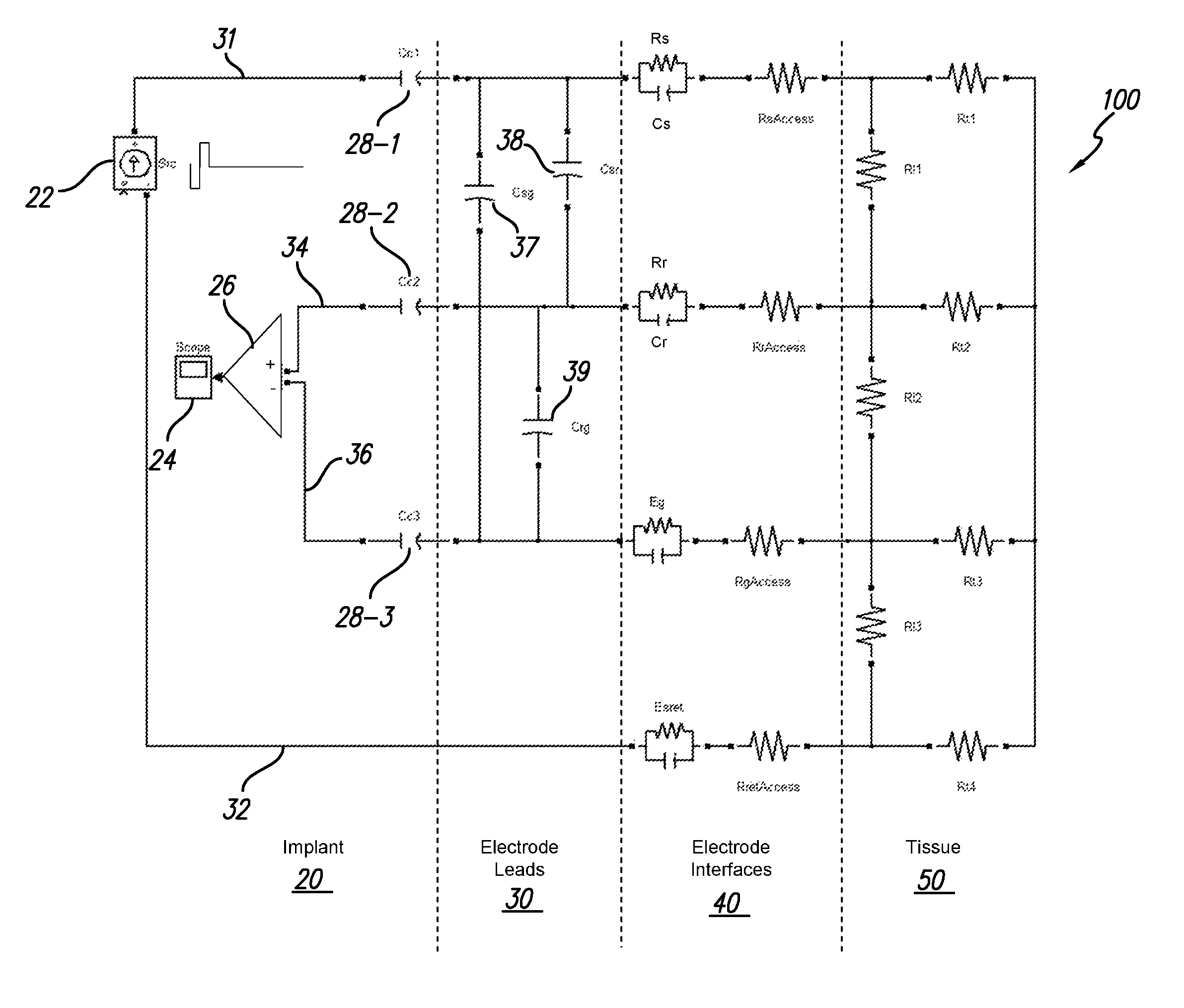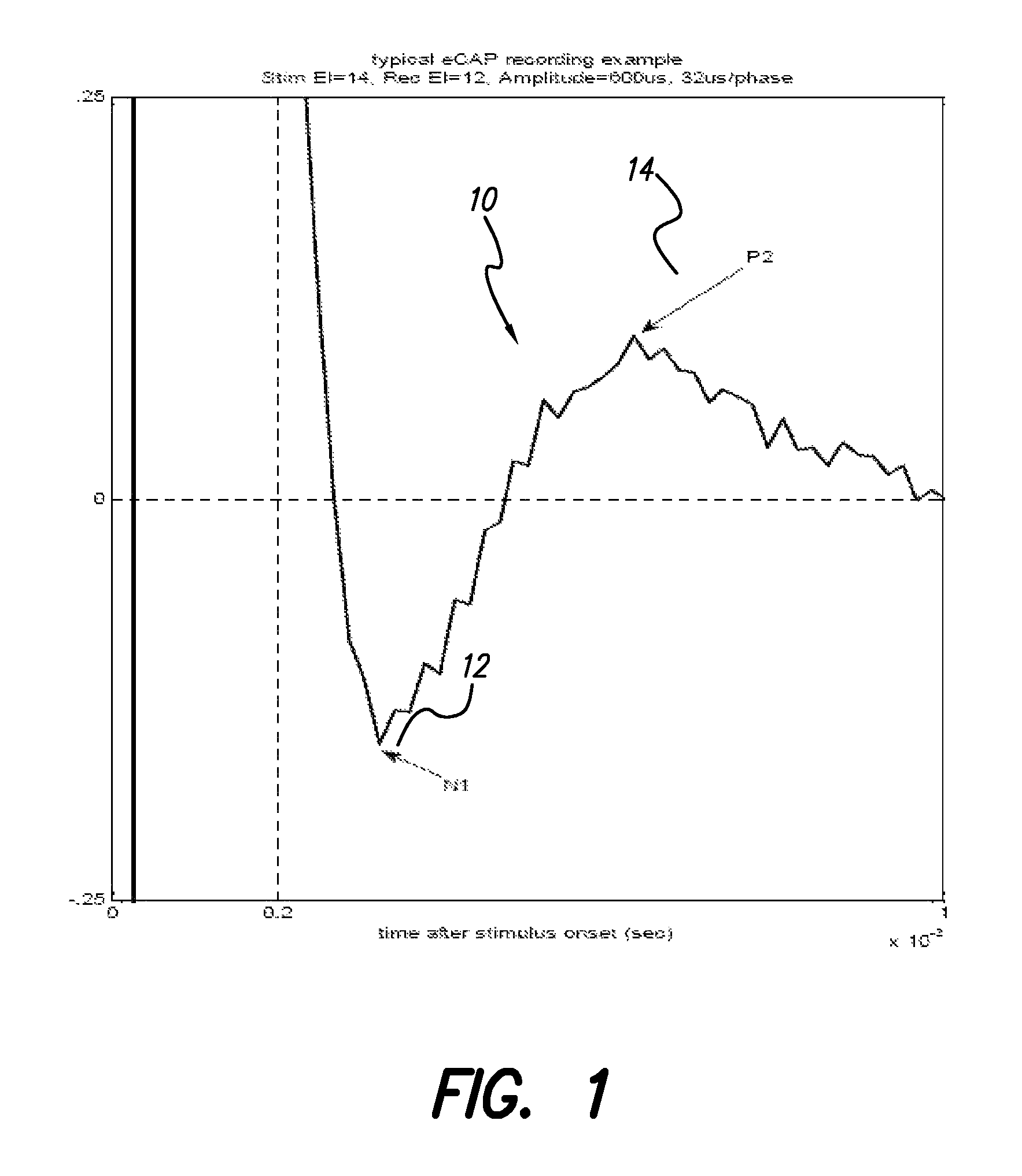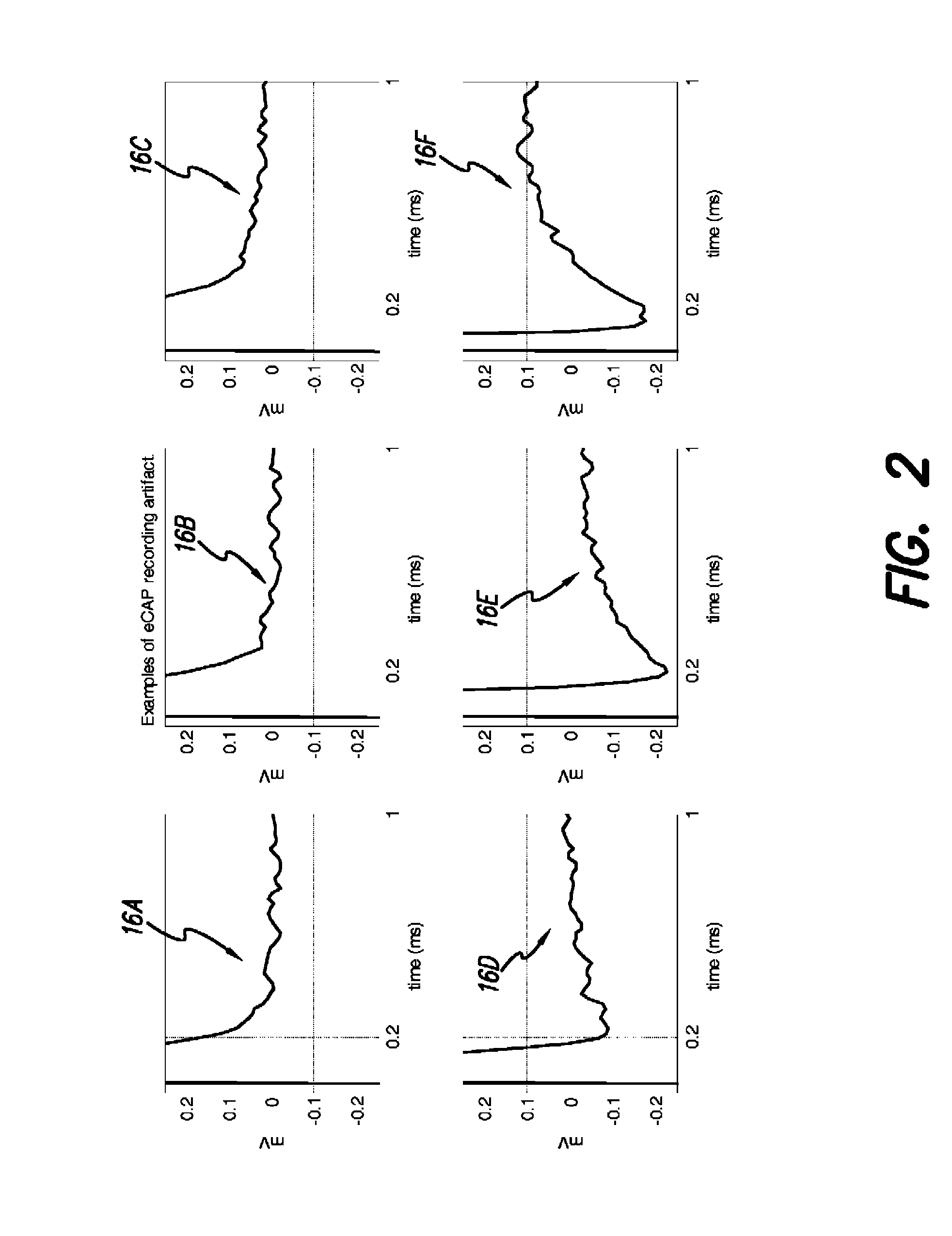Removing artifact in evoked compound action potential recordings in neural stimulators
a technology of compound action potential and ecap, which is applied in the field of implantable medical devices, can solve the problems of difficult sensing of evoked response and unpredictable artifacts with regard to electrode impedances, and achieve the effects of eliminating artifacts, speeding up acquisition, and increasing the accuracy of ecap measurements
- Summary
- Abstract
- Description
- Claims
- Application Information
AI Technical Summary
Benefits of technology
Problems solved by technology
Method used
Image
Examples
Embodiment Construction
[0032]The following description is of the best mode presently contemplated for carrying out the invention. This description is not to be taken in a limiting sense, but is made merely for the purpose of describing the general principles of the invention. The scope of the invention should be determined with reference to the claims.
[0033]In the present disclosure, the probable nature of the described artifact found in eCAP recordings from a neural stimulator, e.g., cochlear implant, is demonstrated by using an electrical-equivalent model 100 shown in FIG. 3. The model 100 includes simplified neural stimulation portion modeled with ideal hardware components in conjunction with electrode-tissue interfaces. Using model 100 the artifact which matches the typical characteristics of the recorded artifacts can be produced. This artifact exists even when the ideal current sources and ideal recording hardware components are used to obtain the measurement. The artifact appears as the result of d...
PUM
 Login to View More
Login to View More Abstract
Description
Claims
Application Information
 Login to View More
Login to View More - R&D
- Intellectual Property
- Life Sciences
- Materials
- Tech Scout
- Unparalleled Data Quality
- Higher Quality Content
- 60% Fewer Hallucinations
Browse by: Latest US Patents, China's latest patents, Technical Efficacy Thesaurus, Application Domain, Technology Topic, Popular Technical Reports.
© 2025 PatSnap. All rights reserved.Legal|Privacy policy|Modern Slavery Act Transparency Statement|Sitemap|About US| Contact US: help@patsnap.com



